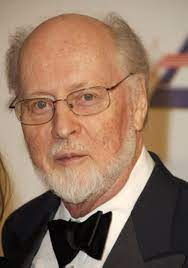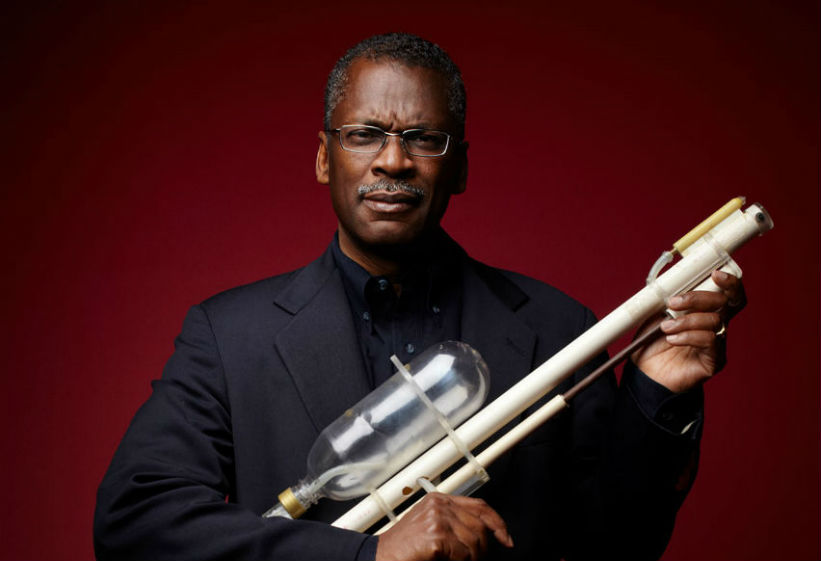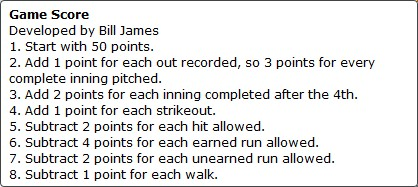Sunday, February 26, 2023
James Whitner: Elevating Jordan Brand
Jordan Peele: A New Era of Horror
Although it may not be everyone's cup of tea, horror is my favorite movie genre. From old pioneers like "The Exorcist" to cult classics like "Jennifer's Body," horror can come in many forms. Some movies cause fear and others induce disgust, but the best horror movies invoke these elements while telling a story with a clear message. Jordan Peele's contributions to the horror genre, "Get Out," "Us," and "Nope" are all prime examples of good horror films. All three movies combine classic horror elements with a gripping plot and a compelling theme. Examining Peele's history allows a glimpse into his creative process and the inspiration for his films.
Peele's most recent addition, "Nope," is a sci-fi horror film that focuses on the theme of exploitation. Fast Company interviewed Ian Cooper, Peele's long time friend and right-hand man, about Peele's process when creating "Nope." Cooper has a unique perspective into Peele's process because they have been friends for over 30 years and worked closely together when creating these films. When asked about their dynamic, Cooper said that he and Peele were both creative people with experience in the visual arts. Jordan Peele has a long history in the arts, namely in the sketch comedy show "Key and Peele." Cooper said that this experience allowed him and Peele to hone the skill of "how to conceptually condense ideas into visual language" (Fast Company). "Nope" is a very visual movie--its ability to keep the attention of the audience is instrumental to communicating the theme of exploitation as the audience mirrors the characters in the movie, gawking at commodified weirdness. Peele wanted to create a UFO movie and visually communicate the theme of exploitation, which led to the, in my opinion, successful creation of "Nope".
Peele also watched horror movies as a child so he developed an affinity for them at a young age. His combined experience with comedy and horror also translated to his second horror movie, "Us," which is a slasher comedy-horror focused on classism. "Us" has the elements of a slasher film and has moments of intense suspense but Peele balances this out with expertly timed jokes that cut the tension but do not erase it entirely, keeping the audience engaged. Peele's ability to draw from different past experiences to create something new is a good example of the collective style of thinking. Peele draws on his comedic and visual experience to create a new era of horror that allows the audience, in his words, to, "address real life horrors and social injustices in an entertaining way" (Biography). Peele's entries in the horror genre have been entertaining and revolutionary.
References:
https://www.fastcompany.com/90771564/inside-the-creative-swings-of-jordan-peeles-nope
https://www.biography.com/actors/jordan-peele
John Williams: A Legend
to popular movie series such as Star Wars, Indiana Jones, Jurassic Park, Jaws, and more. He has had tremendous success and has gotten the opportunity to work with numerous high-profile directors including Alfred Hitchcock, George Lucas, and Steven Spielberg. How then, does this talented film score composer go about creating his musical masterpieces?
The secret that Williams shared is that his process has always remained consistent: He writes music "the old-fashioned way, with pencil and paper, and doesn't begin composing until he's actually seen a rough cut of the film", he states in an interview done with NPR. He explains how reading a script helps him to form "all kinds of preconceptions about how things look, what the location's like, and what the actors are like" but how sometimes it does not align with what the director had in mind at all.
This has taught Williams that sometimes, freedom can be limited when working in teams. Williams unknowingly (or maybe knowingly) made it apparent that "critique" is a very important step in his creative process. Unlike authors or storytellers, Williams has the inconvenience of needing his film scores to be approved by every director that he works with. However, these boundaries and limitations seem to only enhance the amount of creative work that he is able to produce.
Within the Four C Model of Creativity, John Williams' work would fall under the category of Pro-C creativity - emphasizing the talent, achievements, and effort that he has put in over the span of his seven decade career. There are some out there who may even argue that he is deserving of the 'Big-C' category and these arguments are valid - his work can most definitely be considered to be artistic masterpieces unlike anything we have seen or heard in this industry. John Williams will go down as one of the best film score composers of all time and we should consider ourselves to be lucky to have heard his beautiful music while he is still alive.
Sources:
https://www.classical-music.com/composers/john-williams-exclusive-interview/
https://www.npr.org/sections/deceptivecadence/2012/11/10/164615420/john-williams-inevitable-themes
https://www.imdb.com/name/nm0002354/
https://www.bostonmagazine.com/arts-entertainment/2015/10/09/john-williams-lifetime-achievement-award/
Marina Abramovic: Performance Art to the Extreme
In 1974, at the young age of 23, Serbian performance artist Marina Abramovic stood in a gallery in Naples. Next to her was a table with 72 objects on it. Some of the objects were meant for pleasure such as a glass of water, a coat, and shoes. Other objects could be used to invoke pain such as razor blades, a hammer, and even a loaded pistol. The instructions on the table stated, “There are 72 objects on the table that one can use on me as desired. I am the object. During this period, I take full responsibility”. Abramovic gave everyone in attendance six hours, from 8 pm to 2 am, to do as they please with her and the objects. She was interested in seeing what the public is about and what they are going to do in this kind of situation. She stated that for this performance piece, she prepared herself for the possibility that she may die. Marina’s own retelling of the performance and what happened during it is below:
At first, the public was respectful and nice to her, giving
her a glass of water to drink or handing her the rose to hold. Then a man took a
pair of scissors and cut her clothes off. From there the public got more
violent and would cut her with the razor blades, chain her up, and one man in
the crowd even tried to get Abramovic to shoot herself with the pistol. After
the six hours were up, Abramovic started to move and talk, becoming herself
again. This scared the public and they ran away from her as they could not face
what they had done to her. When they viewed her as an object, it was easy to do
whatever they wanted, once she became human again, they were horrified at the
kinds of things they had allowed themselves to do. This piece entitled Rhythm
0 made those who were in attendance confront how fragile their own humanity
is and demonstrated that if allowed to do as they pleased, many in the public
quite quickly lose their humanity.
Another notable work that continued to expand the boundaries
of what is possible in performance art was Abramovic’s piece entitled The Artist
is Present. This performance took place in 2010 at the Museum of Modern Art
in New York. Every day, eight hours a day, for three months, Abramovic would sit
silently at a wooden table across from an empty chair. She would wait as people
took turns sitting in the chair and locking eyes with her. She met the gaze of
over 1,000 strangers, many of whom were so moved they would cry.
This piece lasted for 750 hours. During this time, Abramovic only moved once, when her ex-lover and former performance partner, Ulay, sat down. Ulay came to her performance after the two had not seen each other for more than 20 years. After he sat down, Abramovic moved to hold his hands.
For decades, Marina Abramovic has pushed the boundaries of performance art. She states that she is fascinated with how far we can push our bodies and minds. Her performances stretch the limits of her own body and mind but also emotionally, intellectually, and physically challenge those who participate in and witness her performances. When asked about her creative process, she stated that she has never had a studio as “a studio makes you lazy and comfortable”. She instead prefers to go on research trips where she immerses herself in nature and studies people from other cultures who push their bodies and their minds in ways that we don’t understand. She says that she likes to expose herself to life and then ideas come as a surprise. As a big C creative, this demonstrates Abramovic’s incredible ability to collect ideas from past experiences, incubate these pieces of information, and come up with novel ideas unconsciously. I gave Abramovic the designation as a big C creative because of the radical paradigm shift she has caused in the field of performance art, completely changing people’s ideas of what performance art is and what it can be.
Sources:
https://hbr.org/2016/11/marina-abramovi
https://www.tate.org.uk/art/artworks/abramovic-rhythm-0-t14875
https://www.youtube.com/watch?v=xTBkbseXfOQ
Mike White: The White Lotus
For two award-winning seasons, The White Lotus has followed two different groups of problematically wealthy travelers to Hawaii and Sicily, respectively. Each plotline creatively showcases the unique personalities of each character through interactions with hotel staff, other resort guests, and their own traveling partner(s). The seasons begin with a mysterious death in the first scenes and follow with flashbacks to the weeks prior. This method of sequence combined with the carefully-curated suspenseful music playing in the background characterize The White Lotus as a dark comedy.
Since its initial release in 2021, The White Lotus has gained an immense amount of popularity in households across America. Its intriguing and mysterious plotline combined with its perfectly-casted characters keep viewers wanting more. After a shocking end to the second season, The White Lotus has been renewed for a third--satisfying the insatiable cravings of its watchers. Behind the incredible success of the show is writer, actor, director, and producer Mike White.

Mike White, born Michael Christopher White, has an extensive list of experience in the entertainment industry. After being involved in the writing of movies like School of Rock, Nacho Libre, and Chuck & Buck, White went on to create, produce, write, direct, and act in Enlightened, an HBO series. In addition to White's production roles, he participated in two seasons of The Amazing Race and won second place on Survivor.

Growing up, White stated that he "had a lot of free time." To fill up this time, White would read and play without the constraints of a schedule. The time that White spent exploring allowed him to develop his imaginative side, which his parents were in strong support of. As a child, White knew that he would have a career in the arts at some point in the future. At the early age of 7, White began to write out his own mini plays for his second-grade teacher--the mother of American playwright, Sam Shepard. White felt inspired by the work of Shepard and would perform his mini plays in his neighborhood. During his college years, White embraced his love of playwriting and began to write full-length plays.
Speaking about his techniques for writing shows, White said that he is "all the characters" with scripting dialogues. He feels that acting and writing are two very separate creative processes, as acting confines you to one role and writing allows you to become all the roles. White noted that his creative process consists mostly of brainstorming and less of actual writing. He only begin the writing process once the characters and storyline are completely set. This technique allows for White to write smoothly and avoid running into any breaks of creative flow.
White's creative process exemplifies that of the Geneplore model. His brainstorming can be compared to the "generation of preinventive structures" in the model. From the process of brainstorming, White can then take part in the "preinventive exploration and interpretation" step through the process of writing and bringing his ideas to life. If White feels that he does not have enough substance to write about, he goes back to the generative phase and the cycle proceeds.
The White Lotus, according to White, was largely influenced by his experience as a contestant on Survivor. One of the most prominent aspects of The White Lotus is the uniquely-suspenseful music that plays throughout the episodes. White adopted this clever idea from Survivor. Another strong influence on The White Lotus is the media that White consumed during his youth. Growing up watching Fantasy Island and Love Boat, White wanted to capture the essence of these shows in The White Lotus. Speaking with regards to the second season of The White Lotus, White took inspiration in Laverne & Shirley when crafting the characters of Lucia and Mia--two business-savvy Italian prostitutes.
Saturday, February 25, 2023
Like..? Ice Spice is in on the Meme
She’s funny, confident and cute—and she knows it. Isis Gaston, better known as Ice Spice, shot to fame on TikTok and Twitter in mid 2022 when Drake played her song “Munch (Feelin’ U)” on his radio station. In January of 2023, she released her first EP, “Like..?”, a mesh of Bronx Drill Rap and poppy melodies, with all tracks produced by friend and collaborator, RIOTUSA aka RIOT.
As with most experiences with virality, Ice Spice faced tremendous support as well as extreme backlash. Many netizens, especially teen girls, queer folk, and those who know how to have fun, embraced Ice’s quirky and sometimes messy lyricism, jokingly likening her to Aristotle or saying she should become president. However, she also received plenty of hate, from copypastas of “crowd goes mild!” in the comment sections of her music videos, to genuine hate and harassment online and in real life.
But with haters wanting to make Ice the butt of the joke, she has instead shown her embracement of the memes surrounding her music and persona; Ice Spice has had a taste of success from virality, and she wants more.
In terms of developing ideas for her music, Ice states that she’s been writing poetry and raps since she was a kid, with her father having her practice freestyling about her day while walking to and from school. But it was only until recently that Ice understood that she could achieve success from making music and going viral. Prior to the release of “Munch,” Ice had garnered some attention with TikTok’s #BussIt challenge and subsequently released her drill rap “Bully Freestyle.” With platforms like TikTok and Twitter, Ice realized that fame is more readily accessible than it used to be, and she began to take music more seriously and used social media to achieve success, similar to many other up-and-coming artists.
As for engaging with her fans, christened “Spice Cabinets” and “Munchkins,” Ice Spice knows when to get in on the joke. Across TikTok, numerous videos, comments, and memes lovingly call her this generation’s Princess Diana. And what does Ice do? She releases the song “Princess Diana.”
Though many artists who gain popularity through TikTok tend to fizzle out, Ice Spice doesn;t seem to be going anywhere, nor does she want to. Just recently, she collaborated with English singer-songwriter PinkPantheress on “Boy’s a Liar pt. 2,” with her catchy verse going viral across TikTok immediately, and the song itself reaching the top five on the Billboard Hot 100 chart.
In my opinion, Ice Spice is currently using virality to achieve a “Pro-C” level of creativity. She is beyond that of normal, “little-c” creativity, even if critics find her music to be lacking. Because Ice Spice has used her fanbase and online fame to her advantage and implemented it into her work ethic and content, she’ll be remembered as a successful artist and internet personality for the foreseeable future.
Friday, February 24, 2023
Hahn Solo: Hilary Hahn's Effects on the Classical World
Hilary Hahn, an American classically trained violinist with three Grammy Awards, has been hailed as one of our time’s greatest soloists. Her emphatic playing style has inspired works written explicitly for her, such as Lera Aurbach’s Sonata No. 4: Fractured Dreams, and she was named “America’s Best Young Classical Musician” by Time Magazine in 2001. She was awarded Glashutte Original Music Festival Prise in 2014 and donated her winnings to Project 440, a Philadelphia-based music education nonprofit. I was introduced to her Instagram through a friend and fell in love with her playing style and welcoming personality.
Beyond her global critical acclaim, Hahn is well-loved by budding string players for her inclusive rhetoric and efforts to broaden the scope of classical music’s outreach. Some of her trailblazing efforts include her “Bring Your Own Baby” program that offered free concerts for parents of young children for the purpose of increasing the accessibility of classical music. Hahn counteracts the distance classical music has from ordinary people by offering concerts in non-traditional venues like yoga studios and knitting circles to lengthen its reach and decrease the elitist attitude that the classical music realm sometimes purveys. By moving her efforts online, she broadened her scope even further with #100DaysOfPractice, an Instagram- and Twitter-based initiative for accountability and progress, while also demystifying the extreme amount of time that goes into professional musicianship that seems impossible to a novice player.
https://twitter.com/violincase/status/1154492795136036864?lang=en
A pro-C creative, Hahn’s creativity in her field stems from improvisation, both solo and with other musicians and composers. Her experimentation with style within improvisation began with her 2012 album Sifra, but Hahn has grown much bolder in recent years, exploring the boundaries of her instrument. Below I have included a beautiful improv session between Hahn and Hauschka, careening from intense and discordant to soft and serene, yet somehow never feeling untethered. Improvisation relies on prior knowledge in technical skill areas such as key, tone, and muscle memory (preinventive structures) to build up an entirely new piece of music in the moment. The incubation of years of practice gives Hahn and other improv musicians the insight to create music, as we see in the geneplore model.
Bibliography:
https://www.classicalarchives.com/feature/hilary_hahn_exclusive_interview.html
https://cso.org/about/performers/affiliated-artists/hilary-hahn/
https://www.alfred.com/authors/hilary-hahn/
Tuesday, February 21, 2023
Barbara Kruger and You and Me
In October 2021, I went on a first date to the Art Institute. We wandered around and eventually made our way to the ‘temporary exhibit’ section of the museum. The art was loud and flashy, using shades of black, grey, white, and red, and most of all, it sent a message. It was personal and intimate, using personal pronouns that drew me into the art. Looking for a title, a creator, anything, I found the name of the artist: Barbara Kruger. I needed to know more.
Born in 1945, Barbara Kruger grew up in what is called the “Golden Age of American Advertising”. This era started in the 40s and spanned past the 60s, as marketing began to get personal, creative, and avant-garde. Target audiences shifted from adults to young adults, and companies began to rebrand themselves.
Barbara began her journey into art in 1964 when she began studying at the Art School at Syracuse University, and then in 1965 at the Parsons School of Design. She studied under noteworthy and influential artists Diane Arbus and Marvin Israel. Before finding her niche, she worked in weaving and painting. But in these mediums, she felt stuck. It didn’t align with her personal identity; it didn’t feel like herself.
In 1979, Barbara began experimenting with photos, text overlays, and colleges. She began overlaying text onto older, repurposed images. This is where she began the type of art she makes today. Her fonts of choice are either Futura Bold or Helvetica Extra Bold in red, white, or black, on a background of red, white, or black. She puts this text onto images that are used in mass media and are often recognizable to individuals who are not trained in art, for example, Marilyn Monroe.
Her art directly addresses the viewer, catching their eye, and calling them out. Her favorite themes are concepts of war, politics, gender, consumerism, violence, sexuality, and identity. She uses examples of advertising that she witnesses growing up as a reference, creating a more ‘realistic’ advertisement: humanity. She often times challenges expectations and authority figures, while simultaneously acting as a voice of expectations and authority.
Barabar also uses her art to comment directly on events that have taken place, such as Roe v. Wade, as a call to action for the viewers.
By using pronouns such as 'you', 'me', and 'us', Barbara forces the viewer to acknowledge her art
and think deeper into the meaning and the message. It puts the viewer directly into the art and the moment.
We, the viewer, and the context of which we are in, the subject of her artwork.
As a pro-C creator, her work has been placed in institutions such as the Museum of Modern Art, the Los Angeles County Museum of Art, and the Art Institute of Chicago. Barbara’s goal for her art is to “construct and contain our experiences” onto images that reflect modern life. She continues to create new work and new installations, and continues to be my favorite artist.
Sources:
https://www.thebroad.org/art/barbara-kruger
Barbara Kruger - MoMAhttps://www.moma.org › Artists
Home - Barbara Kruger - Photograph Collage, Advertising ...http://www.barbarakruger.com
Barbara Kruger | icaboston.orghttps://www.icaboston.org › exhibitions › barbara-kruger
https://www.guggenheim.org/artwork/artist/barbara-kruger
https://wearembc.com/why-the-1960s-was-the-start-of-the-golden-age-of-advertising/
Sunday, February 19, 2023
Lonnie Johnson: The Legend Who Defined Our Childhoods
Bill James: The Creativity of WAR
Bill James’ creativity has absolutely nothing to do with tactics or battle strategies whatsoever. His thought process and achievements put him just about as far away as possible from the likes of Sun Tzu and Napoleon. The WAR that made Bill James famous has to do with something far away from the battlefield: baseball.
Bill James is famous for creating various statistical measures of performance and analysis of America’s favorite pastime. His formulas and computations have shaped the modern era of baseball analytics, but he was not always linked to statistics and numbers throughout his entire life. From a small town in Kansas, young Bill James spent his time watching the Kansas City Athletics. Besides baseball, he kept to himself and would read and write in his room. A lot of his was spent looking at the box scores from the previous day’s games. After college, he was drafted to serve in the Army. After two years of not fitting in, he decided to return to his former passion and write about baseball. That marks the beginning of the career of the most famous name in baseball sabermetrics.
His starting point was very simple: turn baseball into a numbers game. Sure, there were player stats like home runs and runs scored at that time, but he wanted something more. He centered his creative process on the same thing that he would read daily as a kid: the box scores. James would take players' stats and create numerous formulas. He would weigh each stat differently and try to come up with some cumulative value for a player. The most famous innovation accredited to James' work is WAR, wins above replacement, which describes the value of a player in terms of how many more wins they add to a roster. Along with WAR, he also investigated stolen bases and the value that stealing has. At the core of his creative process was questioning. He was curious and wanted to know how valuable a stolen base really was. He wanted to know if the players that announcers lauded as uber-talented were really that valuable to their team’s success. He wanted to know exactly how you could quantify a team’s record and what stats were the most associated with the most important thing in baseball - winning. By turning to the numbers behind the players listed in the sports section of the newspaper, he was able to start a revolution.
As it stands today, it is fair to say that Bill James has made it into the Big-C distinction. Within the field, his initial inquiries and statistical formulas have been used as the building blocks for almost all of baseball analytics today. While he is certainly not the only one who has helped turn baseball into one of the most analytically driven sports today, he was the key figure in starting the sabermetric revolution.
However, at the time of his initial innovations, he was not given the same status. Bill James' work can be considered an incredible conceptual change within the sport of baseball. And with conceptual change, that change is not always initially welcomed. Looking at Csikszentmihalyi’s triangle of interactions between the person, the domain, and the field, it is easy to see the challenges he faced and how he slowly achieved conceptual change. When Bill James first started publishing his findings of the true value of stolen bases and his Pythagorean calculation of winning percentage, the field did not respond well. Most publishers ignored James and his crazy numbers. Even the big sports magazines ignored James’ innovations. Not all of the did, and his work was slowly being published. As more people read about his research, more people and magazines reached out to him. The initial pushback he faced within the field was slowly fading. As more people bought into his sabermetrics, he was able to create even more statistics and formulas, like Game Score, which rates a pitcher’s individual performance on a numeric scale. Numbers had never been used like this before and baseball and James’ work has established the field that exists today in baseball analytics, which further proves his Big-C status. The little boy who would look at the box scores and create crazy formulas and additions in his living room really came a long way.
Georges St-Pierre: The Innovator of Modern Fighting
Georges "Rush" St-Pierre is a mixed martial artist from St-Isidore, Quebec. Also known as GSP, he is a mixed martial artist who helped to revolutionize the sport with his creativity. In a time where mixed martial arts was just beginning to grow under the newly established Ultimate Fighting Championship, GSP revolutionized the sport with his creativity. In order to best understand how his creativity came, one must look back to his childhood.
Before GSP was a dominant, revolutionizing force in the MMA world, he was an undersized kid who suffered from bullying. In order to better protect himself, Georges was enrolled in karate at age 7, but "You can do all the karate you want, when you're eight or nine-years-old and they're 12, when you're alone and there's three of them, you can't do anything. That's the reality" (Georges St-Pierre). Like in the Geneplore Model, GSP had begun to put the tools in place in order to create a safe place for him, but he ultimately failed at protecting himself. This led to him training in additional styles such as boxing, wrestling, and Brazilian Jiu Jitsu.While training, he fell in love with MMA and began to look at a career in fighting now that he was able to defend himself. When he arrived to the UFC, it was in the early development stages where fighters were often one-dimensional. Fighters would often perfect their strengths whether it be in boxing or wrestling, but GSP trained himself to be a well rounded fighter so that he could attack the weaknesses of the other styles. This was extremely creative as he was the first fighter to ever train this way, and it led to him becoming a one time Middleweight Champion, a two time Welterweight Champion, 9 welterweight title defenses, and a UFC Hall of Famer. Because of this creative style, people everywhere began to adapt to become well versed in all of the martial arts in order to be successful. In turn, he has helped to create a new, more skillful approach to fighting.
Sources:
https://www.gspofficial.com/
https://en.wikipedia.org/wiki/Georges_St-Pierre
Quinta Brunson
Quinta Brunson is best known to Generation Z for her role in BuzzFeed videos, creating well known sketches on the YouTube channel. She got started in the acting and comedy world doing stand-up at clubs like The Laugh Factory in Hollywood or Second City in Chicago and then went on to gain popularity at BuzzFeed. She was able to learn a lot in these transformative years of her career, including how to edit and shoot videos, as well as how to properly engage an audience and understand comedy. It was this previous experience that helped her create the well-known and Emmy award-winning show, Abbott Elementary.

Abbott Elementary follows teachers working at an under-funded public school in Philadelphia. Brunson is the star, Janine Teagues, a second grade teacher. The show is a mockumentary style and shines light on problems in public schools while putting a humorous spin on it. It has won an Emmy and regarded highly among those in the field of sitcoms.
There is no doubt that Brunson has clocked in over 10,000 hours when it comes to creating content for people to enjoy. She has put out hundreds of videos, shows, tweets, etc. that have received a lot of global attention. The collective knowledge that she learned from working at BuzzFeed as well as performing at clubs all work together to create the content that she puts out now.
Brunson aims to make this content relatable. BuzzFeed taught her a lot about what she calls the "science of relatability," and the idea that some jokes or concepts can transcend geographic or language barriers. She aims to make her content inclusive and relatable to all that consume it. These relatable ideas come from her own life and her creative process revolves around taking concepts from her own stories and then being able to communicate that with the right team that will take it where it needs to go.
The inspiration from the show comes from her life, like many of her other creative ventures. Her mother was a teacher for 40 years and she saw the impact that her mother had on so many children's lives. She took this idea and ran with it, using the platform to expose how important the role of teachers is and the problems that can arise without proper funding. It somehow is able to beautifully expose the problems with underfunding in public schools while remaining a comedy.
Quinta Brunson has been a creative for quite a while, but is now finally beginning to get the attention she deserves. She has a passion for comedy that continues with every new venture she begins.
Brunson was able to transcend across multiple domains and gain expertise in both, which is quite difficult and rare. Csiksgentmihalyi's Systems Model of Creativity sees creativity as the interaction of the domain, the field, and the person. The person, Brunson, first had a strong hold on the domain of the internet, gaining popularity in that space and then was able to transfer that expertise and credibility to the domain of television. Now, she has gained that same credibility among those in the field of television, as proven by her Emmy win. She will continue to put out creative content, likely reaching even more audiences than before.
Sources:
https://www.fastcompany.com/90694458/7-productivity-secrets-from-stand-up-comedian-quinta-brunson
https://www.gq.com/story/quinta-brunson-abbott-elementary-moty-profile-2022
Geordie Greep: black midi's Master Chef
Geordie Greep is the front man and guitarist of UK based post-punk band, black midi. The band was formed by Geordie and consists of his fellow classmates from the BRIT School, which is a prestigious performing art school in London. black midi released their debut album “Sclagenheim” in 2019, and immediately the world was notified of black midi’s signature style of blending themes of prog-rock, punk, and jazz riffs to create their unique and easily recognizable sound. The band has gone on to release two more critically acclaimed albums and are currently touring across the world.
At the helm was Greep. Growing up, he decided to learn to play the guitar because of a so-called “addiction” to Guitar Hero. He cites his biggest source of inspiration as his father; the man that introduced him to a wide variety of music at a young age. He says his father taught him “there are good and bad music, and there are no boundaries between genres.” The latter half of that quote remains visible as Greep attempts to incorporate a wide blend of genres into his body of work.
When discovering new music, Greep studies the culture and the time period the music came from to better understand how to use its influences on his own music. “Needless to say, the great thing about music is that it doesn’t have to be verbalized, so anyone can enjoy it. I love translated books and movies. Most of my favorite books are French, and I love movies of every kind of genre, but especially I watch a lot of movies from Hong Kong. But when a language is translated, there is always the fear that something has been changed or lost. But again, the great thing about music is that it sounds the same to everyone.”
Many black midi songs are formed as a result of hours long jam sessions. Many of the sessions, Greep employs his method of divergent thinking and is able to come up with many different melodies and lyrics as a response to what his bandmates are playing. Many of the songs that you hear on their albums are vastly different from the ones played at their live shows, as Greep has been known to experiment with new material in front of a live audience.
Geordie Greep and the rest of black midi are currently touring in Australia and hope to come out with new music soon.
Sources: https://tokion.jp/en/2023/01/24/interview-black-midi/
https://pitchfork.com/features/rising/get-to-know-black-midi-a-new-type-of-british-guitar-band/
https://www.guitarworld.com/features/black-midi-geordie-greep-hellfire



















/cdn.vox-cdn.com/uploads/chorus_asset/file/19731317/NERF_Super_Soaker_XP100___Lifestyle.jpg)










